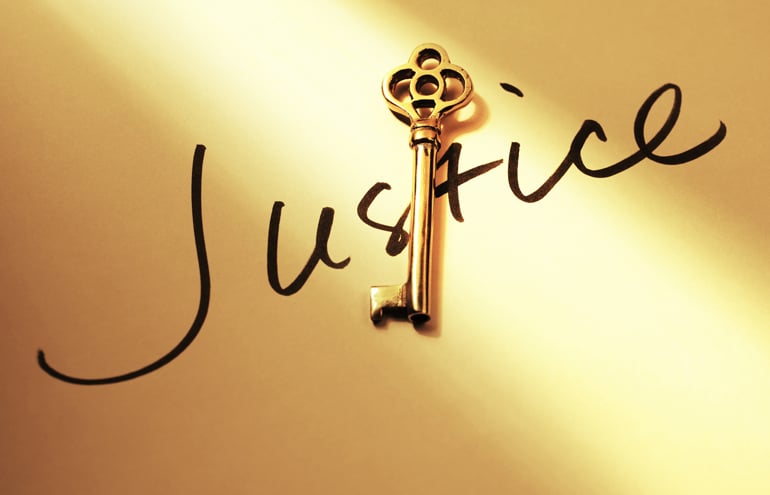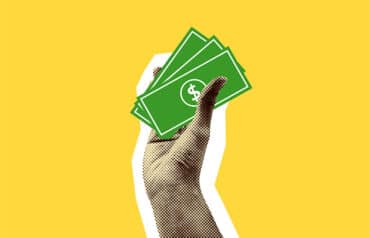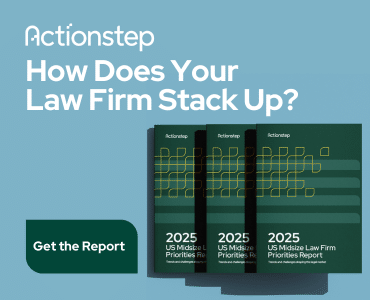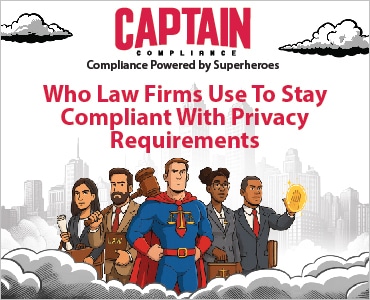Today’s ethics rules, rooted in the 1908 Canons of Professional Ethics, suppress innovation and block meaningful access to legal help. Before debating ethics reform, we must recognize and confront the problematic remnants of the past.

Table of contents
- A Learned Profession, and Not a Commercial Enterprise: 1908 Poppycock!
- Advertising and Solicitation: Protectionism and Self-interest
- Contingency Fees: Legitimate Suspicions or Prejudice?
- Fee Splitting: Historically Embedded Protectionism and Paternalism
- A Profound Contradiction
- Unshackling Access to Justice from Ethical Elitism
Step into most American courtrooms or law offices today, and the surface tells a story of 21st century modernity. Screens glow, cloud-based services hum, and lawyers communicate through texts, emails and video calls. However, beneath this sleek digital facade lies an ethics and regulatory system that remains frozen in the early 20th century, specifically the year 1908.
That year, Henry Ford introduced the Model T, women lacked the right to vote, and racial segregation was the law of the land. Yet, remarkably, the core ethical structure of today’s legal profession remains fundamentally aligned with the American Bar Association’s 1908 Canons of Professional Ethics. This framework was built for a different world, before two world wars, the civil rights movements, economic upheavals, and rapidly emerging political and technological evolutions.
Regulation always lags behind innovation, but legal ethics do not merely lag — they obstruct. Even when changes have occurred, they have typically been incremental and sometimes superficial, resulting in a complicated web of patchwork amendments rather than genuine reform. Thus, the ethical framework remains trapped: archaic at its core, increasingly convoluted at its edges, and profoundly inadequate to meet the contemporary public’s need for accessible and affordable legal services.
A Learned Profession, and Not a Commercial Enterprise: 1908 Poppycock!
Understanding the 1908 Canons begins by recognizing they were shaped by a mix of motivations, not all of them noble. Some still say the Canons arose directly from Theodore Roosevelt’s famous 1905 rebuke of corporate lawyers who assisted their clients in evading the law. That sounds romantic, but it did not happen. As Jerold Auerbach demonstrates in his seminal work, “Unequal Justice, Lawyers and Social Change in Modern America” (1976), the 1908 Canons of Professional Ethics were crafted by an elite group of lawyers who used the opportunity primarily to protect their own dominance within the profession and society.
The country-gentlemen lawyers forged in America’s 19th century found themselves squeezed between new, powerful corporate attorneys, whose success in an industrializing economy attracted Roosevelt’s ire, and the influx of immigrant lawyers eager for work. To compound matters, it should come as no surprise that ethnic, racial and religious prejudices shaped much of this backlash. Immigrant, Jewish and Catholic lawyers were presumed unethical by the powerful established lawyers who controlled bar associations.
Further, consider Auerbach’s point that the Canons were drawn primarily from George Sharswood’s 1854 “Essay on Professional Ethics,” which called for lawyers to “wait for clients like maidens awaiting suitors.” By the early 20th century, these ideas were already antiquated, reflecting a worldview in which lawyers were presumed to be part of a well-connected, genteel class. Instead of acknowledging the realities of an emerging industrial society, the Canons clung to Sharswood’s insistence that virtue alone would elevate the profession, dismissing any effort to seek out clients or advertise as crass commercialism. As the rest of the world moved on from the Gilded Age, lawyers clung to the aristocracy of an earlier time.
Thus, the 1908 Canons focused on protecting business interests among lawyers.
Established attorneys, both country-gentlemen and corporate lawyers, waxed poetic about the virtues of not seeking work, not advertising, hanging a shingle, and waiting for one’s reputation to elevate one’s career. A potent form of self-regulatory protectionism emerged. By strategically directing ethical scrutiny toward less established lawyers, the established attorneys deliberately shifted attention from their own conduct, the very abuses that initially prompted Roosevelt’s criticism.
For the public — particularly working-class and immigrant communities — the impact of these self-serving ethics rules was severe. An injured factory worker or a family facing eviction confronted a legal system intentionally opaque and discouraging. Although somewhat erased from modern rules and forgotten by history, contingency fees, often the only means for ordinary people to afford legal representation, were heavily scrutinized and stigmatized during the deliberations that produced the Canons. This scrutiny diverted business away from unestablished lawyers and created barriers to access to justice. Meanwhile, despite Roosevelt’s cries, the fees charged by corporate attorneys went largely unchecked. Additionally, bans on lawyer advertising kept ordinary people unaware of their legal rights and unable to locate affordable assistance. The Canons even encouraged lawyers to dissuade clients from pursuing litigation — advice no one imagines was ever seriously offered to powerful corporate clients.
The cumulative effect was a legal system that systematically obstructed access to justice, deepening social and economic disparities rather than alleviating them.
With this historical groundwork, we can now directly compare the original 1908 rules — and their subsequent amendments in 1928, 1933 and 1937 — to today’s Model Rules.
In which specific areas has the profession failed to evolve? If access to justice was systematically compromised more than a century ago, it should come as no surprise that the same underlying framework continues to restrict access today. Before engaging fully in contemporary debates about reform, the profession must first explicitly recognize and confront these problematic remnants of 1908.
Advertising and Solicitation: Protectionism and Self-interest
Canon 27, 1908, 1928, 1933 and 1937 → Model Rule 7.1, 7.2 and 7.3
From 1908 to 1937, Canon 27’s evolution reveals an increasingly rigid attempt to reinforce protectionism within the legal profession. Early Canons subtly restricted competition under the pretense of promoting “character and conduct,” thinly veiled references to elite social status. By 1937, however, the Canon’s language had sharpened, explicitly condemning lawyer advertising and solicitation as practices that “offend the traditions,” “lower the tone,” and were outright “reprehensible.” What began as a generalized condemnation of lawyer advertising as inherently “unprofessional” tightened progressively into precise and complete prohibitions against “solicitation” — and, effectively, all advertising.
Granted, lawyers ostensibly won the right to advertise in the 1970s, and on the surface, today’s Model Rules appear significantly more liberal. Television commercials and billboards promoting personal injury attorneys now abound — perhaps exactly the kind of spectacle the original framers sought to prevent. Ironically, while their restrictions were rooted in elitist protectionism, their discomfort with aggressive legal marketing may not have been entirely misplaced.
And yet, in truth, what appears to be progress may be little more than a mirage. Rules that now permit lawyer advertising still operate under the shadow of 1908, shaped by the same elitist anxieties and protectionist instincts that once banned it altogether. Beneath the permissive veneer, the core sentiments and even some of the original language persist, quietly reinforcing the profession’s protectionist bias. And in doing so, they continue to chill outreach, stigmatize innovation and obstruct meaningful access to justice.
Rule 7.1
Specifically, Rule 7.1 explicitly prohibits “false or misleading” communications, undoubtedly a fundamental ethical standard essential to public trust. Yet vague boundaries around what constitutes “misleading” often discourage lawyers from embracing innovative ways of reaching underserved populations. Commentary on the rule clarifies that even truthful statements about past achievements may violate ethical guidelines if they create an “unjustified expectation.” This carefully calibrated language echoes early Canon prohibitions against “self-laudation.” Lawyers today still tread carefully around promotion, aware that crossing ambiguous ethical boundaries can endanger their licenses. As a result, lawyers with long-established reputations enjoy a structural advantage. Rule 7.1 continues to shield established lawyers from competition under the guise of protecting the public.
Rule 7.2
Rule 7.2 ostensibly embraces client outreach, explicitly permitting lawyers to “communicate information regarding their services through any media.” It allows lawyers to pay for advertisements. In this respect, the rule sensibly addresses a genuine ethical concern preventing deceptive intermediaries (the “touters” explicitly condemned since 1908) from misrepresenting themselves as impartial sources. Yet, in apparent contradiction to this liberal stance some state rules still “gently” remind lawyers that “an active quest for clients [is] contrary to the tradition that a lawyer should not seek clientele,” subtly reinforcing the profession’s historical discomfort with client outreach, or more bluntly, protecting the established lawyer’s client base from being poached and perpetuating barriers to access to justice.
Rule 7.3
Perhaps the strongest historical echo emerges in Rule 7.3, reflected in the Model Rules’ continued fixation on the perceived dangers of “solicitation.” Although no longer categorically prohibited as it was in 1937, direct lawyer-client contact remains carefully restricted, framed by commentary as inherently suspect and vulnerable to “overreaching,” “undue influence” and “intimidation. Thus, today, the term “solicitation,” as used in ethics commentary, is rarely applied neutrally to describe proactive client outreach or legitimate business development. Instead, it remains loaded with negative associations. Embedded in this meticulously curated language is an unmistakable historical contempt for attorneys who proactively seek clients, rather than relying exclusively on passive methods favored by traditional, socially privileged practitioners.
This tortured framework is magnified in today’s digital marketplace, where numerous pop-up legal services, directory websites and apps frequently emerge to connect lawyers with underserved clients. Small firm and solo attorneys regularly struggle to determine whether these platforms constitute permissible advertising or prohibited solicitation, or if they inadvertently cross ethical boundaries. Thus, many practitioners understandably avoid these promising solutions altogether. And an ethical chilling effect emerges, reminiscent of early 20th-century restrictions. Lawyers passively retreat to established professional networks, where clients typically have existing connections and those without them are left without legal services. Consequently, modern, otherwise compliant platforms that could dramatically enhance access to justice remain underutilized, perpetuating historical barriers rather than dismantling them.
At best, the framework embodies paternalism and assumes today’s digitally informed public cannot discern trustworthy attorneys from charlatans, both of whom inevitably exist, regardless of restrictions on “solicitation.” Does the legal profession genuinely believe that public judgment today is no better than in the early 20th century? And frankly, why disparage the good citizens of that era?
Further, taken seriously, Rule 7.3 implies that lawyers — both in 1908 and today — are inherently predatory, thus requiring perpetual constraints. This contradiction is startling and indefensible for a profession claiming fidelity to justice.
Lawyers swear to protect the public, yet remain severely limited in their ability to communicate with them under the banner of anti-commercialism starting in 1908. Ironically, after a century of regulating lawyer speech in the name of dignity, the loudest voice the profession has left is the personal injury ad — gaudy, simplistic and yet somehow completely ethical under existing rules.
Ultimately, the original elitist structure endures, subtle but unmistakable protectionism, designed less to serve the public than to shield established attorneys from economic competition by stigmatizing proactive client outreach, thereby perpetuating the ongoing access to justice crisis that began before 1908.
Contingency Fees: Legitimate Suspicions or Prejudice?
Canon 13, 1908, 1933 → Model Rule 1.5(c)
Next, consider next the persistent suspicion surrounding contingency fees. The historical text from 1933 seems straightforward:
Rule 13 Contingent Fees – A contract for a contingent fee, where sanctioned by law, should be reasonable under all circumstances of the case, including the risk and uncertainty of the compensation, but should always be subject to the supervision of a Court, as to its reasonableness.
On its face, this provision appears unobjectionable. Yet beneath its neutral language lies an unmistakable continuation of the elite-driven skepticism first embedded in the 1908 Canons. By mandating judicial oversight and emphasizing “reasonableness,” the 1933 amendment quietly reinforced suspicion toward contingency fees, often the only option for working-class litigants. As Auerbach and others observed, these rules were never about client protection; rather, they imposed procedural burdens primarily on lawyers serving less affluent clients. Cloaked in rhetoric about fairness, these regulations implicitly discouraged representation of those unable to pay upfront, creating a discriminatory and anti-competitive effect.
Today’s Model Rule 1.5(c) maintains this curious oversight, explicitly prohibiting contingency fees in criminal and domestic matters. While valid public policy reasons may support these prohibitions, the underlying historical suspicion toward contingency fees remains evident.
Modern attorneys often perceive contingency arrangements as an efficient pathway to profitable litigation against well-funded opponents, such as insurance companies. Yet viewing contingency fees solely through the lens of an attorney’s financial opportunity misses their broader significance. For many litigants unable to afford upfront legal costs, contingency fees offer the only realistic route to justice. Thus, today’s restrictions demand critical reconsideration: Do they genuinely protect important public policy and vulnerable clients, or do they perpetuate long-standing barriers to justice rooted in outdated client and lawyer protectionism and prejudice?
Fee Splitting: Historically Embedded Protectionism and Paternalism
Canon 34: 1928, 1933, 1937 → Model Rule 5.4
To fully grasp the economic protectionism embedded within today’s Model Rules, consider the revealing history of Canon 34, governing fee-sharing between lawyers and non-lawyers.
In 1928, Canon 34 pragmatically acknowledged certain commercial realities:
No division of fees for legal services is proper, except with another lawyer, based upon a division of service or responsibility. But the established custom of sharing commissions at a commonly accepted rate, upon collections of commercial claims between forwarder and receiver, though one be a lawyer and the other not … is not condemned hereby …
This limited but practical exception recognized that lawyers often collaborated with other professionals in commercial contexts. Even the drafters implicitly acknowledged that such practical cooperation did not inherently corrupt a lawyer’s independent judgment.
Yet, by 1933, the permissible exception had already narrowed, restricted explicitly to “collections of liquidated commercial claims.” By 1937, it disappeared altogether:
No division of fees for legal services is proper, except with another lawyer, based upon a division of service or responsibility.
What explains this abrupt tightening? Did the profession wholly miss the moral and ethical high ground in 1928, get closer in 1933 and finally hit the mark in 1937? Hardly. This progressive narrowing reflects economic issues, not ethical enlightenment.
Today’s Model Rule 5.4 preserves the 1937 restrictions virtually unchanged:
A lawyer or law firm shall not share legal fees with a non-lawyer.
Next, consider carefully how a rule crafted nearly a century ago to protect then contemporary economic interests fits awkwardly into today’s landscape. Modern law increasingly intersects with fields — technology, cybersecurity, healthcare management, data analytics — that were unknown to the drafters of Canon 34 and even Model Rule 5.4. Yet, the legal profession remains stubbornly attached to outdated assumptions about attorney independence, presuming financial collaboration with non-lawyers inherently threatens professional judgment.
This assumption raises an obvious question: Who, if not a trained lawyer, is better equipped to resist undue influence? This professional blind spot has deep roots and contradictions.
A Profound Contradiction
When Theodore Roosevelt issued his famous 1905 rebuke of corporate attorneys, he warned against corporate power corrupting lawyers’ professional judgment. Rather than directly addressing Roosevelt’s concerns, the rules evolved, through Canon 34 and later Model Rule 5.4, to impose their strictest constraints not on corporate counsel, but disproportionately on solo and small law firms serving ordinary clients. Today, this contradiction is unmistakably clear when comparing corporate legal departments with small firms.
If the fictional person known as a corporation seeks interdisciplinary collaboration, it purchases that expertise outright. Corporate counsel routinely collaborate across disciplines — integrating technologists, compliance officers, financial experts and business strategists — by directly employing these specialists. Because each receives a separate salary, corporate law departments, essentially law firms, neatly circumvent ethical restrictions on “fee-splitting.” The fictional corporation becomes a centralized hub for interdisciplinary teamwork without its law firm technically sharing legal fees.
Let’s compare that to small firm lawyers representing ordinary low-income and middle-class clients.
Solo and small firm lawyers cannot ethically offer similar multidisciplinary collaboration without the client directly hiring and paying each professional separately. And if the client lacks sufficient resources, ethics rules explicitly prohibit lawyers from structuring their practice to provide the same collaborative advantages — efficiency, integrated expertise and scale — that wealthier or corporate clients routinely enjoy.
Thus, the ethics rules embody not only unmistakable paternalism but also entrenched protectionism. Wealthy clients are trusted to determine how best to utilize lawyers and related professionals. Meanwhile, ordinary clients and their attorneys remain constrained by regulations that dictate acceptable service methods, shield traditional law practices from competitive innovation — and protect established interests rather than empower clients.
These restrictive rules offered a limited economic consolation prize to the lawyers they disadvantaged. Solo and small firm practitioners, barred from adopting interdisciplinary models that could improve client outcomes, were at least permitted to retain exclusive rights to whatever fees their less-affluent clients could afford upfront. Yet this minor advantage pales in comparison to the expansive interdisciplinary freedom routinely enjoyed by corporate counsel, further highlighting the fundamental inequities perpetuated by the profession’s ethics rules and their legacy. What would Roosevelt say?
Unshackling Access to Justice from Ethical Elitism
This article does not claim to offer a revelation. Ethicists have long examined the uneasy relationship between professional ideals and economic self-interest. What sets the legal profession apart is its continued resistance, even obtuseness, in acknowledging that tension. From the 1908 Canons to the 1969 Model Code to today’s Model Rules, the profession has steadfastly framed its ethics rules as guardians of independence and client protection, while sidestepping the economic interests they also serve.
Further, proposing specific reforms is beyond this article’s scope. But it is offered in the hope that it has confronted a history too long ignored. Nearly 50 years after Auerbach’s “Unequal Justice,” it is long past time to face the uncomfortable probability that today’s ethics rules, by design or effect, preserve economic advantages for lawyers and their best-paying clients, while restricting access for those least able to pay. Direct textual and rhetorical analysis reveals that beneath the modernized language of today’s Model Rules lies the enduring logic of the 1908 Canons: exclusion, elitism and protectionism.
Reform Requires Candor
If ethics reform is to be meaningful, it must begin with historical honesty — and resist both the elitism of the past and the lure of unchecked commercialism of today.
More than a century after the Canons were adopted, access to justice remains out of reach for most Americans. These archaic ethical constraints are part of the reason.
As AI and non-lawyer competitors reshape the legal landscape, clinging to outdated restrictions risks not only failing the public but rendering lawyers themselves increasingly irrelevant. The notion that ethics rules and regulations over unauthorized practice of law can hold back billion-dollar innovations is not only outdated, but dangerously naive.
Admittedly, confronting this reality is difficult. Lawyers working in People’s Law are already overwhelmed. In many areas, especially rural regions with too few lawyers, the issue often goes unnoticed, simply because lawyers are stretched too thin. Few have the time, incentive or professional bandwidth to reconsider the rules that shape their work or question the broader system.
And, because lawyers are trained within a framework that may, at its core, be designed to protect their professional self-interest, the broader purpose of the profession is often overlooked.
The legal profession exists to serve the public, not just those who can pay. At the broadest level, it bears an ethical obligation to expand access and ensure lawyers are equipped with structure, resources and flexibility to meet unmet legal needs. That obligation includes building pathways for all lawyers to serve the communities still locked out of legal help. And this obligation goes far beyond the profession’s routine fallback: pro bono.
From the solo practitioner in the smallest town to the largest corporate firm — along with disciplinary authorities, bar leaders, and rulemaking bodies — all must confront this problem together. We must examine how current regulations suppress innovation, block meaningful access to legal help and risk marginalizing the legal profession in the modern age. Solutions exist, and have long existed: interdisciplinary collaborations, legal service plans, limited-scope representation and thoughtful integration of technology, freed from outdated caution. But solutions are stifled by a profession clinging to a 1908 framework.
Reform begins with candor. The profession must finally acknowledge its historical biases, confront the self-serving roots of its current framework, and reconnect with the public it claims to serve before that connection is further diminished.
Author Note: I would like to thank Maguire Schneider Hassay LLP law clerk Skylar Lord, a second-year law student at Capital University, for her invaluable assistance and research regarding the historical versions of the Canons. Additionally, I am eternally grateful for Jerold Auerbach’s book “Unequal Justice, Lawyers and Social Change in Modern America”, particularly Chapter Two: A Stratified Profession, upon which much of the first section is drawn. Without it, this article would not have been possible.
Image © iStockPhoto.com.

Sign up for Attorney at Work’s daily practice tips newsletter here and subscribe to our podcast, Attorney at Work Today.















